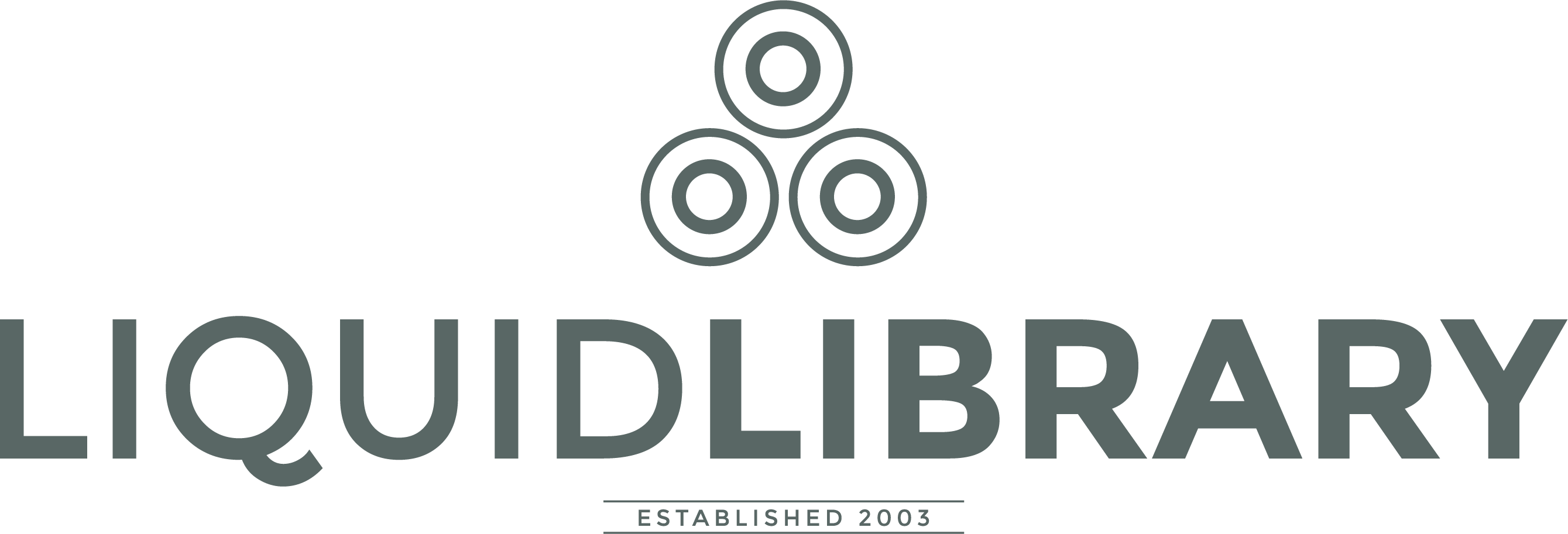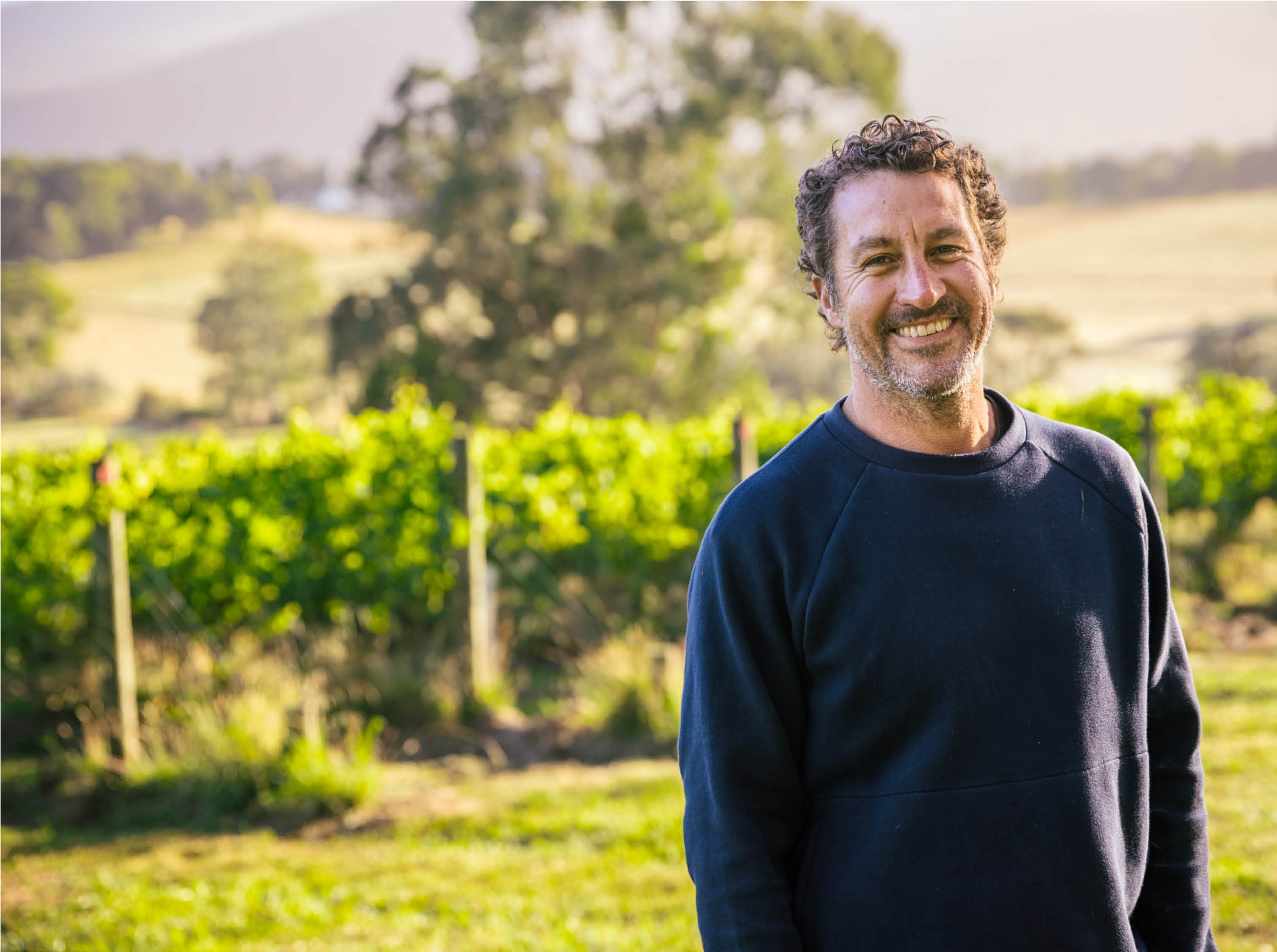

About
"In creating Mac Forbes Wines back in 2004, there was a clear purpose to better understand and connect with where I am from. The more I have discovered over the years, the more I realise there still is to learn. Today, we are driven by curiosity and a passion for the nuances of this unique place. In each bottle of wine we offer a small snapshot of our evolving understanding of the Yarra Valley, and hope that through sharing these wines you will find joy and excitement in the stories they tell." - Mac Forbes

2022 Vintage Recap
"The 2022 vintage was certainly a challenging one! A number of significant rain events early in the growing season disrupted flowering, with Pinot Noir and Chardonnay suffering greater yield reductions than the later bursting varieties. Our dry-grown vineyards loved the consistent Spring rainfall, producing vigorous green canopies, but it also made machinery access in the vineyards quite difficult, so our team were out working the undervine by hand for some of the season.
The harvest started off slightly late, with the first pick on 22nd February 2022, and took a bit of logistical acrobatics to juggle so many small parcels, however the weather behaved nicely throughout March and we finished the vintage strong on 4th April 2022. At harvest, bunches were coming in half the size we would usually expect, with an average bunch weight of only 58 grams in Pinot Noir and 62 grams in Chardonnay. The tiny bunches were absolutely packed with flavour though, with wines from 2022 showing unexpected depth and intensity. The concentration of tannins from a higher skin to juice ratio was especially beneficial in Pinot Noir, with elegant structure and vibrant fruit. The cooler and drier Summer weather allowed for stunning natural acid retention and beautiful flavour development in Chardonnay. On the whole, it was a vintage of exceptional quality. We just wish we had more of it!" - Mac Forbes

Villages
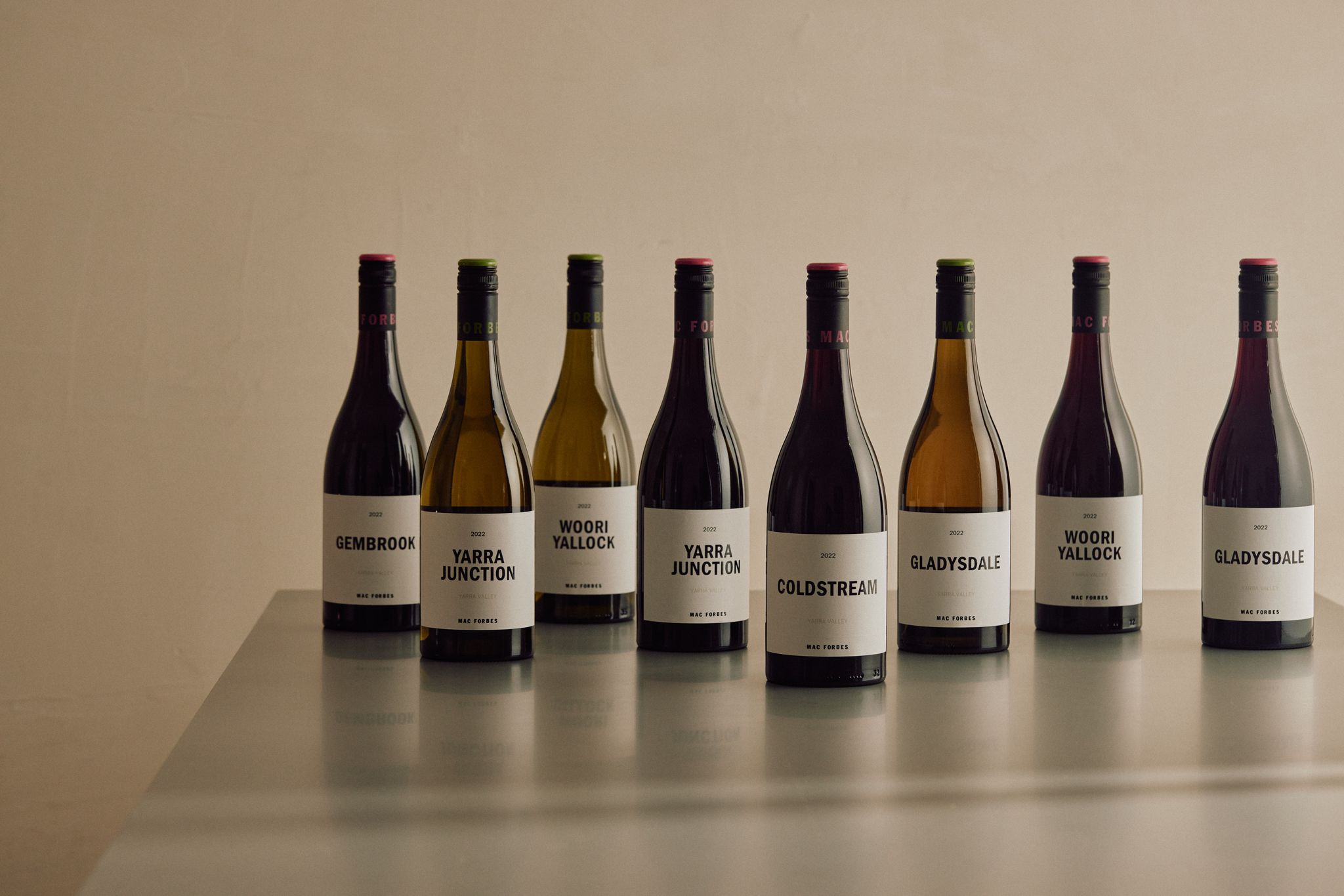
(Image: Mac Forbes Wines / www.macforbes.com)
'Our Village range honours the diversity of the land where we live and work. Each wine is our attempt to grasp the character of the Yarra Valley’s various distinctive sub-regions.Village seeks to bridge the gap between the micro-detail of soils in the Single Vineyard range and the broader strokes of the Yarra Valley regional wines.Incorporating parcels from both the vineyards we farm and growers we work with in each sub-region, the Villages tier adds another layer of expression beyond the Yarra tier. Focusing on the climatic influences and range of soil profiles across the different areas of the Valley, this tier helps us define sub-regionality in a macro sense.' - www.macforbes.com
![]()
2022 Gladysdale 'Village' Chardonnay

Sitting at the southern end of the Yarra below Yarra Junction in the valley running north-south down to Gippsland. Gladysdale subregion receives increased warm air that travels down the valley, with increased air moisture content due to the surrounding forests and higher solar radiation. Grey/brown clay soils dominate, with full, rich aromatics and a supple structure that sits prominently on the front palate.
Tasting Notes
Seductive yellow stone fruits and honeysuckle play on the nose, with just a hint of curd providing intrigue. Generosity on the palate is balanced with bright fresh fruits and a fine silty structure that knits everything together.
We recommend decanting this wine prior to serving between 10-15Cº.
Vintage
A rather wet winter into a rather wet spring meant difficult flowering conditions (lowering yields) but big healthy green canopies, which our dry grown vineyards were very happy about. We had to be agile to hit the right picking windows, but were really happy with the fruit quality and the density of flavour in the resulting wines.
Wine Analysis
Alc/Vol: 12%
Acidity: 6.6 g/L
pH: 3.42
Winemaking
Soils: Grey/brown clay
Fruit: Destem & crush before pressing
Yeast: Wild
Maturation: 11 months in small & large old oak
Fining: None
Filtration: Sterile
Bottled: 24th January 2023
Release Date: 1st August 2023
![]()
2022 Yarra Junction 'Village' Chardonnay

East facing within a smaller valley that runs from Yarra Junction to Poweltown in the south, featuring grey loam soils with underlying silt. Cooler winds roll off the Yarra River, with mountains directly to the north and south-west providing protection from hot afternoon sun in summer. Typically later ripening, thicker skins and higher acids are reflected in elegant structure with clean lines and powerful drive.
Tasting Notes
Vibrant nose with fleshy white stone fruits, jasmine and a touch of ginger root. Bright palate with crisp green apple skin and talc. Mealy structure holds tension in the core, while pulpy fruits soften the finish.
We recommend decanting this wine prior to serving between 10-15Cº.
Vintage
A rather wet winter into a rather wet spring meant difficult flowering conditions (lowering yields) but big healthy green canopies, which our dry grown vineyards were very happy about. We had to be agile to hit the right picking windows, but were really happy with the fruit quality and the density of flavour in the resulting wines.
Wine Analysis
Alc/Vol: 11.5%
Acidity: 6.6g/L
pH: 3.20
Winemaking
Soils: Grey loam soils with underlying silt
Fruit: Destem & crush before pressing
Yeast: Wild
Maturation: 9 months in small old oak
Fining: None
Filtration: Sterile
Bottled: 14th December 2022
Release Date: 1st August 2023
![]()
2022 Woori Yallock 'Village' Chardonnay

Sitting behind the Waramate hills, this area encompasses both red volcanic and grey loam soils making it slightly more complicated to pinpoint a clear identity of this subregion. The undulating hills provide protection from the drier winds, the rainfall is slightly higher and the perfume, weight and structure appears more dense and effortless, pulling through seamlessly to the back palate.
Tasting Notes
Delicate aromatics of blush peach skin and orange blossom. Palate is zesty and playful, brimming with fresh citrus, florals and a little custard apple. The tactile back palate draws focus to the finish.
We recommend decanting this wine prior to serving between 10-15Cº.
Vintage
A rather wet winter into a rather wet spring meant difficult flowering conditions (lowering yields) but big healthy green canopies, which our dry grown vineyards were very happy about. We had to be agile to hit the right picking windows, but were really happy with the fruit quality and the density of flavour in the resulting wines.
Wine Analysis
Alc/Vol: 12%
Acidity: 6.8 g/L
pH: 3.24
Winemaking
Soils: Red volcanic & grey loam
Fruit: Destem & crush before pressing
Yeast: Wild
Maturation: 9 months in small old oak
Fining: None
Filtration: Sterile
Bottled: 14th December 2022
Release Date: 1st August 2023
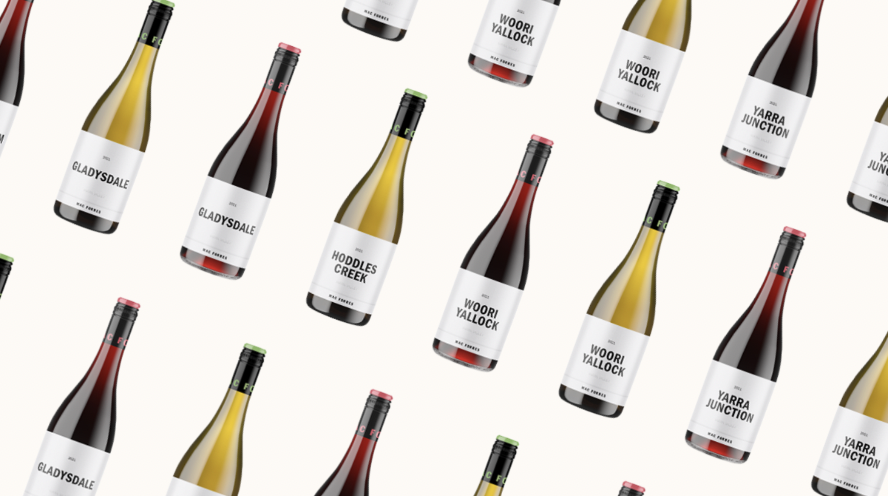 (Image: Mac Forbes Vineyards / www.macforbes.com)
(Image: Mac Forbes Vineyards / www.macforbes.com)![]()
2022 Coldstream 'Village' Pinot Noir

At the entrance to the Valley floor, this subregion is low elevation with grey/loam clay based soils. Ripping winds from the north slow transpiration in summer but the cooler overnight temperatures aid the plants ability to regulate after hot days. Ironstone/mudstone is a consistently big influence, building full mid-palate structure with soft, melting tannins.
Tasting Notes
Delicate aromatics of soft talcy florals and pulpy red plum. The palate is fleshy with dark red fruits, baked rhubarb and a touch of savoury cacao. Firm structure across the mid palate melts to a generous lingering finish.
We recommend decanting this wine prior to serving between 14-16Cº.
Vintage
A rather wet winter into a rather wet spring meant difficult flowering conditions (lowering yields) but big healthy green canopies, which our dry grown vineyards were very happy about. We had to be agile to hit the right picking windows, but were really happy with the fruit quality and the density of flavour in the resulting wines.
Wine Analysis
Alc/Vol: 12%
Acidity: 5.8 g/L
pH: 3.63
Winemaking
Soils: Grey loam overlying clay
Fruit: Whole berry in open fermenters for 14 days on skins
Yeast: Wild
Maturation: 10 months in small old oak
Fining: None
Filtration: Polished
Bottled: 24th January 2023
Release Date: 1st August 2023
Winefront Review by Gary Walsh
Posted on 18 April 2024
"I was told this wine goes down well with sommeliers, which I get, because it offers plenty of Pinot character, and is maybe the most approachable/affable of the wines in the village range.
Spicy strawberry and red fruit, autumnal, and gently earthy. It’s light bodied, quite sappy and again quite spicy, almond, rhubarb and red fruits, tannin is gently grainy, and the finish is savoury and pretty long. Nice wine. Very Yarra, you might say."
93 Points
![]()
2022 Gembrook 'Village' Pinot Noir

Located at around 300m elevation at the southern end of the Yarra Valley, much of the Gembrook subregion is situated on red volcanic soils, with small outcrops of granite scattered across the region. The vineyard this fruit is drawn from grows entirely on one of those patches of granite, and we see this so clearly in the tactile structure of the wines. An exciting addition to the village portfolio.
Tasting Notes
Brooding dark cherry and berry fruits draw you in, evoking memories of black forest cake. Density and compression on the mid palate unfurl, with bright fruits coming to the fore and chalky structure providing freshness.
We recommend decanting this wine prior to serving between 14-16Cº.
Vintage
A rather wet winter into a rather wet spring meant difficult flowering conditions (lowering yields) but big healthy green canopies, which our dry grown vineyards were very happy about. We had to be agile to hit the right picking windows, but were really happy with the fruit quality and the density of flavour in the resulting wines.
Wine Analysis
Alc/Vol: 11%
Acidity: 5.6 g/L
pH: 3.58
Winemaking
Soils: Granite & decomposed quartz
Fruit: 20% macerated bunches, 23 days in concrete & open fermenters
Yeast: Wild
Maturation: 10 months in small old oak
Fining: None
Filtration: None
Bottled: 24th January 2023
Release Date: 1st August 2023
Winefront Review by Gary Walsh
Posted on 18 April 2024
"I tasted through nine wines with Mac Forbes today, quite quickly. but that’s ok by me, because I’m supposed to a professional, though, ideally, I’d have liked to have spent a little more time with them. And Mac. There will be a Gembrook in 2023, also, and then no more, as the vineyard has now been sold. This is from a patch grown on granite soils.
More fruit intensity than is usual for this producer, I must say. Cherry pip and dark cherry, kind of juicy, but also very ‘mineral’ and the tannin has presence and a spread of silty grip. In some respects, it’s almost a quasi-Tasmanian offering in terms of flavour profile and depth, and unusual in that way. Finish is long, and those tannins are quite something. And don’t mind me, because I seem to be doing wine analogies today, it has something of a stony Barbaresco quality in the mix too. This is excellent. Different for Mac Forbes, but so good."
95 Points
![]()
2022 Gladysdale 'Village' Pinot Noir

Sitting at the southern end of the Yarra below Yarra Junction in the valley running north-south down to Gippsland. Gladysdale subregion receives increased warm air that travels down the valley, with increased air moisture content due to the surrounding forests and higher solar radiation. Grey/brown clay soils dominate, with full, rich aromatics and a supple structure that sits prominently on the front palate.
Tasting Notes
Dark cherry, baking spice and a sinewy hint of fresh mulch leap out of the glass. Fresh red cherry and goji berry dance lightly across the palate, with silty structure adding depth and complexity to quite a heady wine.
We recommend decanting this wine prior to serving between 14-16Cº.
Vintage
A rather wet winter into a rather wet spring meant difficult flowering conditions (lowering yields) but big healthy green canopies, which our dry grown vineyards were very happy about. We had to be agile to hit the right picking windows, but were really happy with the fruit quality and the density of flavour in the resulting wines.
Wine Analysis
Alc/Vol: 11%
Acidity: 6.3 g/L
pH: 3.60
Winemaking
Soils: Grey/brown clay soils
Fruit: 10% whole bunch, 20 days on skins in open fermenters
Yeast: Wild
Maturation: 8 months in small & large oak
Fining: None
Filtration: None
Bottled: 24th January 2023
Release Date: 1st August 2023
Winefront Review by Gary Walsh
Posted on 18 April 2024
"Lloyd, our English Cocker Spaniel, absolutely plays favourites. Aside from Mike Bennie, Fluffy Hair Adair, and, curiously, my brother, he seems to really love Mac Forbes. I’m chopped liver when any of those fellows are around.
Aromatic, amaro, lots of spice, raspberry and strawberry, petrichor. Light, but very fresh, clear and ‘mineral’, spicy and lightly chalky, a little more granular in feel of tannin, with a firm finish of excellent length. It’s spritely, but very good. You have to like them kind of lean, though I reckon there’s nuance to this wine, and that works for me."
94 Points
![]()
2022 Yarra Junction 'Village' Pinot Noir

East facing within a smaller valley that runs from Yarra Junction to Poweltown in the south, featuring grey loam soils with underlying silt. Cooler winds roll off the Yarra River, with mountains directly to the north and south-west providing protection from hot afternoon sun in summer. Typically later ripening, thicker skins and higher acids are reflected in elegant structure with clean lines and powerful drive.
Tasting Notes
Moody morello cherry and a little resinous funk open up to floral aromatics and an edge of orange rind. Vibrant red fruits on the front palate flow into a savoury core, with mealy structure drawing the finish down a lovely long line.
We recommend decanting this wine prior to serving between 14-16Cº.
Vintage
A rather wet winter into a rather wet spring meant difficult flowering conditions (lowering yields) but big healthy green canopies, which our dry grown vineyards were very happy about. We had to be agile to hit the right picking windows, but were really happy with the fruit quality and the density of flavour in the resulting wines.
Wine Analysis
Alc/Vol: 11%
Acidity: 6.1 g/L
pH: 3.50
Winemaking
Soils: Grey loam soils with underlying silt
Fruit: 20% whole bunch, 21 days on skins in open fermenters
Yeast: Wild
Maturation: 10 months in small old oak
Fining: None
Filtration: None
Bottled: 24th January 2023
Release Date: 1st August 2023
Winefront Review by Gary Walsh
Posted on 18 April 2024
"Interesting wines these. If you sat six people in a room, and served them the six ‘village’ wines, likely everyone there would pick a different favourite.
Stony earthy expression, a floral undercurrent, red cherry and blackcurrant, gentle spice. Smells great and very distinctive. Light-bodied, but kind of mouth-filling, tannin is all pumice stone, spicy and sappy, with some blood orange to close. A bit edgy, but plenty of personality. Dare I say it? OK, I will. There’s more than a little bit of old school Burgundy character to this Yarra Valley wine."
94 Points
![]()
2022 Woori Yallock 'Village' Pinot Noir

Sitting behind the Waramate hills, this area encompasses both red volcanic and grey loam soils making it slightly more complicated to pinpoint a clear identity of this subregion. The undulating hills provide protection from the drier winds, the rainfall is slightly higher and the perfume, weight and structure appears more dense and effortless, pulling through seamlessly to the back palate.
Tasting Notes
A bright nose bursting with sour cherry and a sappy edge of amaro, the influence of whole bunch apparent. Elegant red fruits flow towards a structural back palate, with the vibrant acid line lifting the wine into another plane.
We recommend decanting this wine prior to serving between 14-16Cº.
Vintage
A rather wet winter into a rather wet spring meant difficult flowering conditions (lowering yields) but big healthy green canopies, which our dry grown vineyards were very happy about. We had to be agile to hit the right picking windows, but were really happy with the fruit quality and the density of flavour in the resulting wines.
Wine Analysis
Alc/Vol: 11.5%
Acidity: 6.2g/L
pH: 3.69
Winemaking
Soils: Red volcanic & grey loam
Fruit: 20% whole bunch, 17 days on skins in open fermenters
Yeast: Wild
Maturation: 9 months in small old oak
Fining: None
Filtration: Polished
Bottled: 24th January 2023
Release Date: 1st August 2023
Winefront Review by Gary Walsh
Posted on 18 April 2024
"Tasting through the village wines – Woori Yallock, Gembrook, Coldstream, Yarra Junction, and Gladysdale – well, gee, they are all so different in character. Which is exactly the point.
Redcurrant, fresh raspberry, jalapeño, lots of spice, slightly floral, oak not in sight as a flavour component. Light-bodied, the capsicum/green pepper notes don’t show on the palate very much at all, bright red fruit, delicacy and spice, a rainwater coolness here, if you like. A luminous style, and quite engaging with it. A subtle orange flavour carries on a finish of excellent length. I grant that this style is maybe not for everyone as it’s kind of barely there in a way, but for me, well, I like it a lot. Some wines shout at you, but this one whispers."
94 Points
![]()
Forbes on the Land
Written by Julia Harding - jancisrobinson.com on 17 July 2023
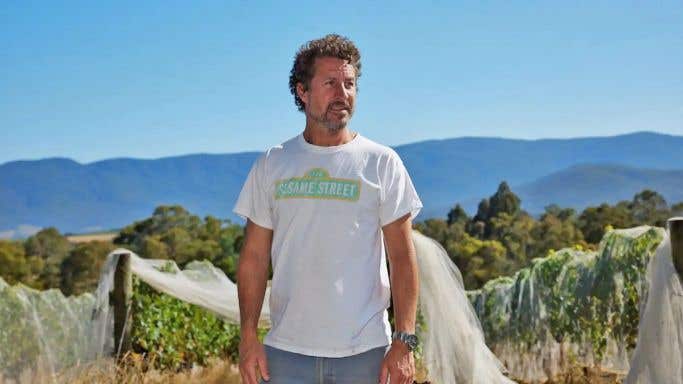
This Yarra Valley winemaker’s newest releases are informed by his iconoclastic approach to phylloxera, as well as his increasingly holistic understanding of the land.
Standing up to phylloxera
While phylloxera arrived in Australia’s state of Victoria in the 1870s – as it continued to ravage the vineyards of Europe – the Yarra Valley escaped infection until 2006, when, according to Yarra vintner Mac Forbes, it was brought in by Treasury Wine Estates. (See Max Allen’s summary of the situation in 2015 in Phylloxera creeps through Yarra.) Today nearly all the Yarra Valley growing area is under threat: only about 27% of vineyards are on resistant rootstocks, according to Wine Yarra Valley’s 2021 Vineyard Survey, and while not all ungrafted vineyards are infested, all are within 5 km (3.1 miles) of one that is. (See this map on the Agriculture Victoria website, which includes much information about the state’s phylloxera management strategy and the zones.)
While some Yarra producers and growers are waiting it out until they see their vines start to decline, Forbes, who was in London in June to show off his current and imminent releases, tells me that he’s decided on a preemptive approach: to uproot the at-risk ungrafted vines so that he can replant on phylloxera-resistant rootstocks and move on. This has a direct effect on his wines, as he and his team aim to leave blocks fallow for 2–3 years. So it is going to be around four years before they control 80% of their fruit intake from the five Yarra vineyards that they either own or lease on a 30-year contract. (See this map of the main ones.) In the meantime, they are purchasing more than 60% of their fruit.
However, Forbes believes the effort to be worth it. He points out that the Yarra Valley vineyard area is shrinking overall ‘because the farmers who supply fruit can’t afford to replant. If they do grub up the vines, they could make more money with cattle because of the enormous cost of replanting and waiting for the vines to reach bearing age.’ According to the Yarra Valley survey, the cost of replanting onto resistant rootstocks is estimated to be around AU$95,000 per hectare.
Forbes says it could well be double that with dense planting (he has chosen 8,000–12,000 vines/ha instead of the typical 2,500 vines/ha) and dry farming because the vines take longer to crop and bud numbers are lower. There is also the much higher cost of plant material. He prefers to ‘ask less’ of each vine by planting at this density. (This approach is like that of the Keller family in the Rheinhessen, see The Kellers’ 2022 releases and scroll down to ‘Vineyards of the future’.) Forbes confessed that they have taken out a ‘stupid amount of loan’ to finance the replanting.
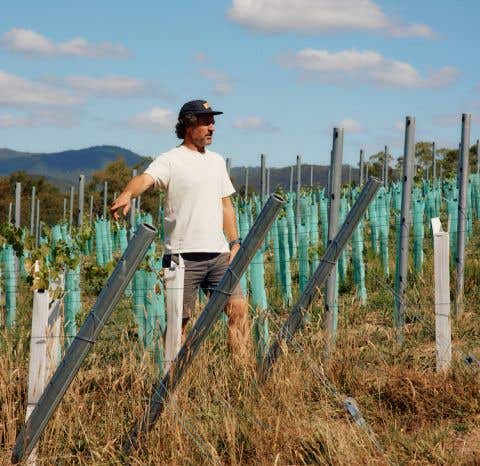
As well as replanting existing sites, they are also planting a number of new blocks, for example on the south side of the Dividing Range, ‘which are significantly cooler, have lower UV levels, higher rainfall, and reduced daylight hours’ to provide them with the sort of grapes they are looking for: fully ripe but with high acidity and moderate sugar levels. (The alcohol levels in the wines described below are all 11–12.5%.)
Forbes notes that ‘While site selection is becoming more critical, especially for early varieties like Pinot Noir and Chardonnay [their main focus], there are many sites around the valley being planted to new varieties. We alone have planted smaller areas as ongoing trials of Grenache, Nebbiolo, Mencía, Grüner Veltliner, Blaufränkisch, Aligoté, Trousseau, Chenin Blanc and Gamay.’
Trials and their consequences
Dealing with phylloxera also involves essential vineyard trials, particularly with regard to rootstock selection. For the majority of their replanting they are grafting the vines in the vineyard, a traditional and highly skilled method known as field grafting. Some vines they buy have already been grafted at a vine nursery (known as bench grafting). The problem for Forbes is that most of the trials that have been done or are in progress involve irrigated vines and it is hard to know if the results will be same in their dry-farmed vineyards since rootstocks influence vine vigour and overall performance in local soil and climate conditions.
Forbes is an inveterate trial man, occasionally to the frustration of some of his team, he told me. However, he also points out that ‘It is all the farming trials that have led to where we are today.’
One important change they have made is to lower the height of the cordon, for example lowering it from the standard 900 mm (35 in) off the ground to 400 mm (16 in) in their Chardonnay blocks in the Ferguson vineyard. They found the quality of the fruit was better, reflected in the fact that the vines with lower cordons always provide the grapes for their single-vineyard Ferguson Chardonnay, whereas the fruit from the vines with the higher canopy typically go to the regional or village Chardonnay.
They have also observed that the combination of higher-density planting and dry farming means that the plants ‘regulate their growth’. The canopy growth is slower compared with that of nearby irrigated vineyards whereas once they were in sync. Dry farming changes the structure of the wines, believes Forbes, with the focus of the wine moving from the front to the back of the palate.
Respect for the land
All this may give the impression that he is interested only in the detail but this obsession with vineyard trials makes sense in the context of his approach to the land, which is influenced by the attitudes of the Wurundjeri people, whose traditional custodianship of the land is acknowledged on every back label (a practice now followed by many producers) and who have, unusually, come to see what is he doing and expressed approval, he says. ‘They have a different lens through which they see the land’, he continues. ‘Soil is a simple variable but the land is more complex.’
This understanding emerged during the tasting when I asked Forbes to give me an outline of the differences between the various ‘villages’ that he identifies in the Yarra Valley (eg Woori Yallock, Yarra Junction, Coldstream). In response, he launched into a discourse on their stewardship of the land and the water, seeing them as shared resources, not something to be owned and consumed or exploited.
This is particularly significant at a time when the Yarra River catchment is 40% down, mainly because of agricultural and domestic use, and when in many of Australia’s wine regions, water is a commodity to be bought and sold. Forbes and his team are planting trees that help the land filter the water and hold onto it, not those that are heavy drinkers. He adds that the question of irrigation is not black and white and that there are good and bad irrigation practices but he firmly believes that is possible to dry farm in the Yarra Valley, ‘at least for now’.
Expanding on the theme in an email exchange after the event, Forbes explains his gradual enlightenment. ‘Vines are just a small part of the land. The land is what is important’, he stresses. ‘Elders talk about adaption of plants but also adaption of our own behaviours and expectations. And this for me is the major practice to adopt. We need to change our expectations to better align with the natural capacity of the land. That for me is real sustainability.’
Forbes explains that this change in mindset is the greatest source of excitement and pride among the team. ‘Having grown up in the Yarra, I was always conscious that we seem to be farming on the land and not working in sync with it. When your goal is a single crop, it often becomes the primary objective. Once the conversation moved to responsibilities of water use and that it’s not something we should try to “own” but to use and share, we started to review our own interactions. With additional conversations around regenerative farming, ideas of what sustainable interaction with the land includes, we gradually felt a shift in our mindset and approach. It is humbling and powerful and instils so much more faith in the capacity for nature to cope and in particular for vines to survive in our Australian environment without the same levels of input.’
This not only affects Forbes’s approach to farming but also his approach to winemaking. ‘Our wines are affected by our farming views. Mostly that our responsibility is to farm in balance, allowing the vines to adapt to this remarkable environment and then to share what is so unique. This journey has helped me appreciate what makes Yarra something to celebrate in all its history and in turn to celebrate its future without looking over our shoulder [at Europe]. Our own journey is exciting and doesn’t need to be compared to elsewhere with a sense of inferiority. It’s a wonderful time to be confronting who we are.’
A note on labelling
Forbes has several wine ranges and the labelling until now has been confusing and erratic. At last, they seem to have found a way forward and this is reflected in the wine names below. There are Yarra Valley wines, sourced from several vineyards and subregions (listed on the back label); village wines (some shown below) that express the character of a subregion (eg Woori Yallock, Yarra Junction); and single-vineyard wines, eg Ferguson. In addition there’s the Experimental Batch (EB) wines, often made only once, numbered consecutively and now up to at least EB84; the Strathbogie Rieslings (labelled by their residual sugar level, eg RS8); and the one-off bordeaux blend Hugh. Got it? The range is ‘as unfathomably complicated as ever’, says Lance Foyster MW of Clark Foyster, UK importer of these wines for almost 20 years, but at least now the labelling is clearer.
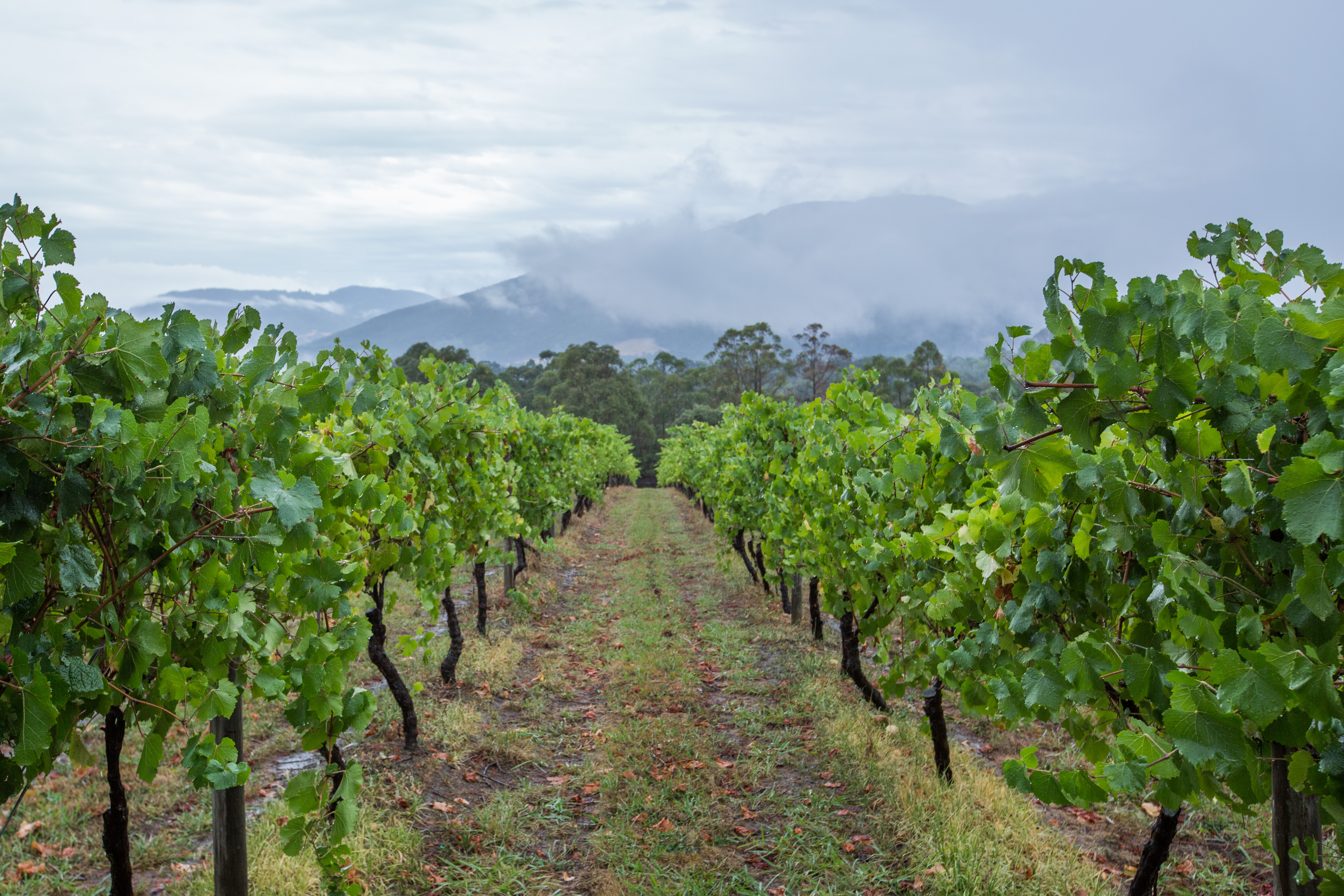 (Image: Mac Forbes Vineyards / www.macforbes.com)
(Image: Mac Forbes Vineyards / www.macforbes.com)
New release enquiry
